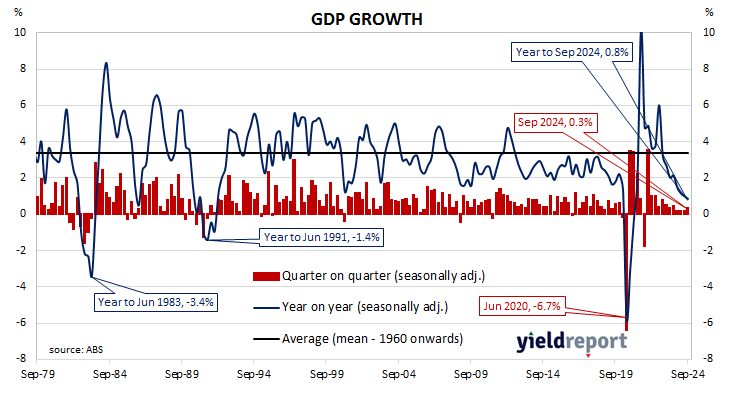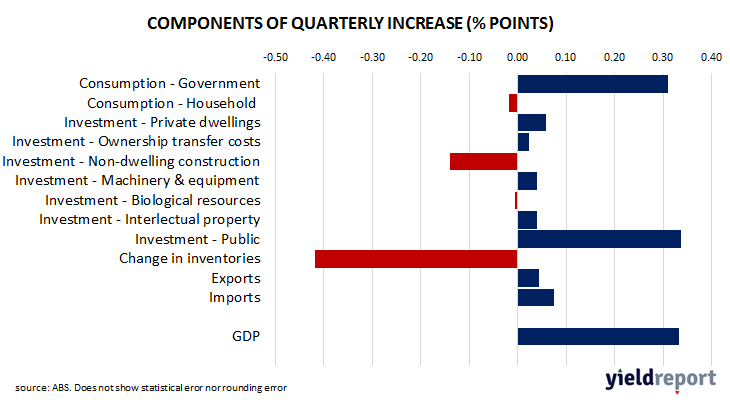Summary: Australia’s GDP up 0.3% in September quarter, less than expected; up 0.8% over year; Westpac: increased government spending driving all of gain; ACGB yields fall; rate-cut expectations harden; Westpac: points to weaker underlying picture; government investment, inventories major influences in quarter.
Since the “recession we had to have” as the recession of 1990/91 became known, Australia’s GDP growth has been consistently positive, with only the odd negative quarter here and there. However, Australia’s first recession in nearly thirty years was inevitable in 2020 once governments introduced restrictions which shut businesses and limited people’s movements for an extended period of time. Growth rates have been positive since then, although the September 2021 quarter proved to be the exception after restrictions were reintroduced in eastern states.
The latest GDP figures have now been released by the ABS and they indicate GDP rose by 0.3% in the September quarter. The result was less than the 0.5% increase which had been generally expected but up slightly from the June quarter’s 0.2%. On an annual basis, GDP expanded by 0.8%, down from 1.0% in the previous quarter.
“The Australian economy grew by a sluggish 0.3% in the September quarter, with increased government spending driving all of the gain,” said Westpac economist Pat Bustamante. “Private demand flatlined with household consumption and new business investment surprising to the downside, both holding flat over the quarter.”
Commonwealth Government bond yields fell across a steeper curve on the day, in contrast with upward movements of US Treasury yields overnight. By the close of business, the 3-year ACGB yield had shed 8bps to 3.83%, the 10-year yield had lost 4bps to 4.28% while the 20-year yield finished 3bps lower at 4.61%.
Expectations regarding rate cuts in the next twelve months hardened. Cash futures contracts implied an average of 4.325% in December, 4.28% in February and 4.03% in May. November 2025 contracts implied 3.67%, 67bps less than the current cash rate.
“The main takeaway from the September update however is that an expected tentative recovery in private demand has not formed,” Bustamante added. “The RBA did flag that a flat quarter for consumption was likely. However, the weakness of annual growth in spending and continued pressures on household disposable income, even with tax cuts flowing, points to a weaker underlying picture.”
Government investment expenditures increased by $2.2 billion, contributing 0.34 percentage points to the quarter’s result, while a $2.7 billion change in inventories contributed -0.42 percentage points. Household consumption, which accounts for 50% of total GDP, subtracted 0.02 percentage points after a $0.1 billion fall.



